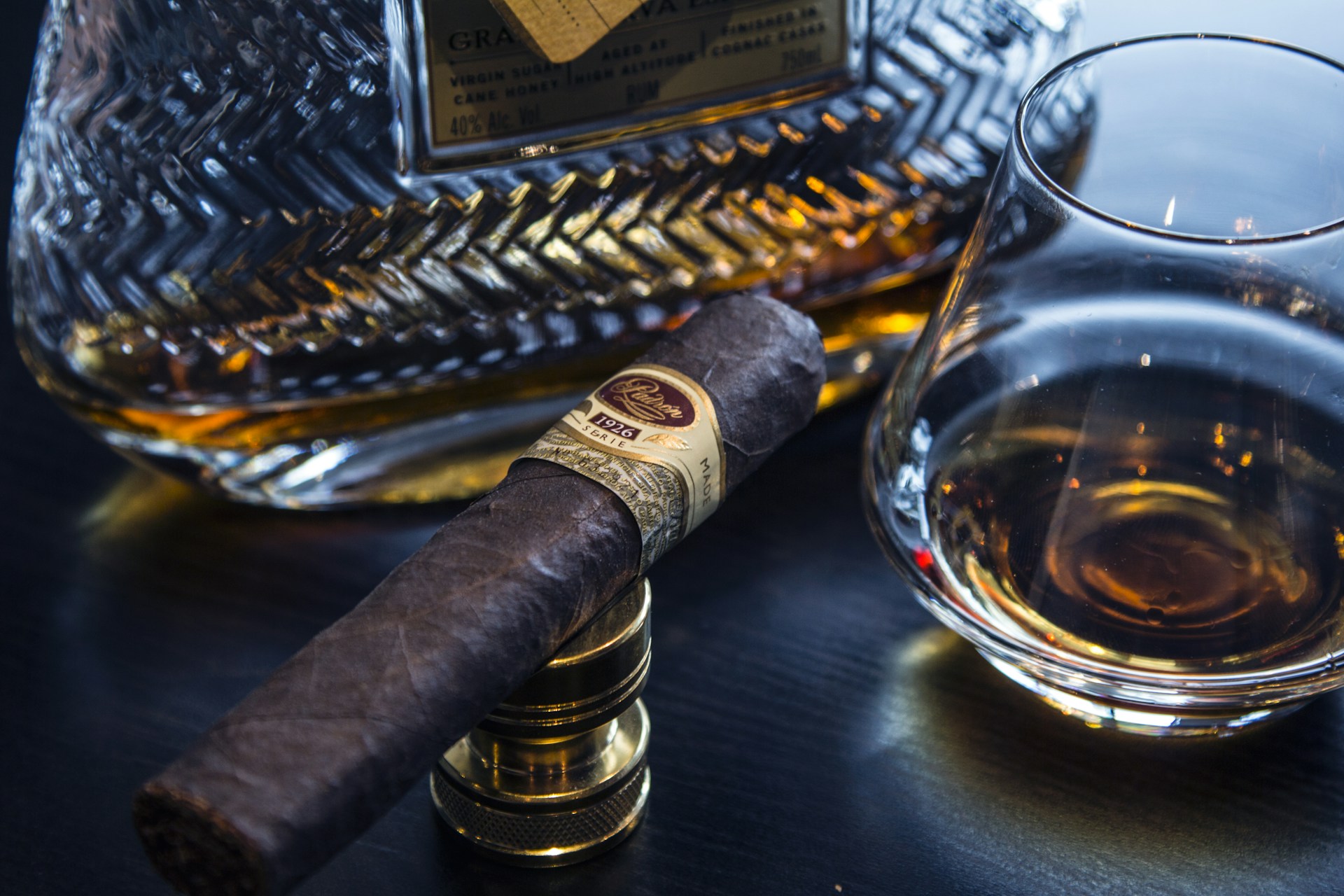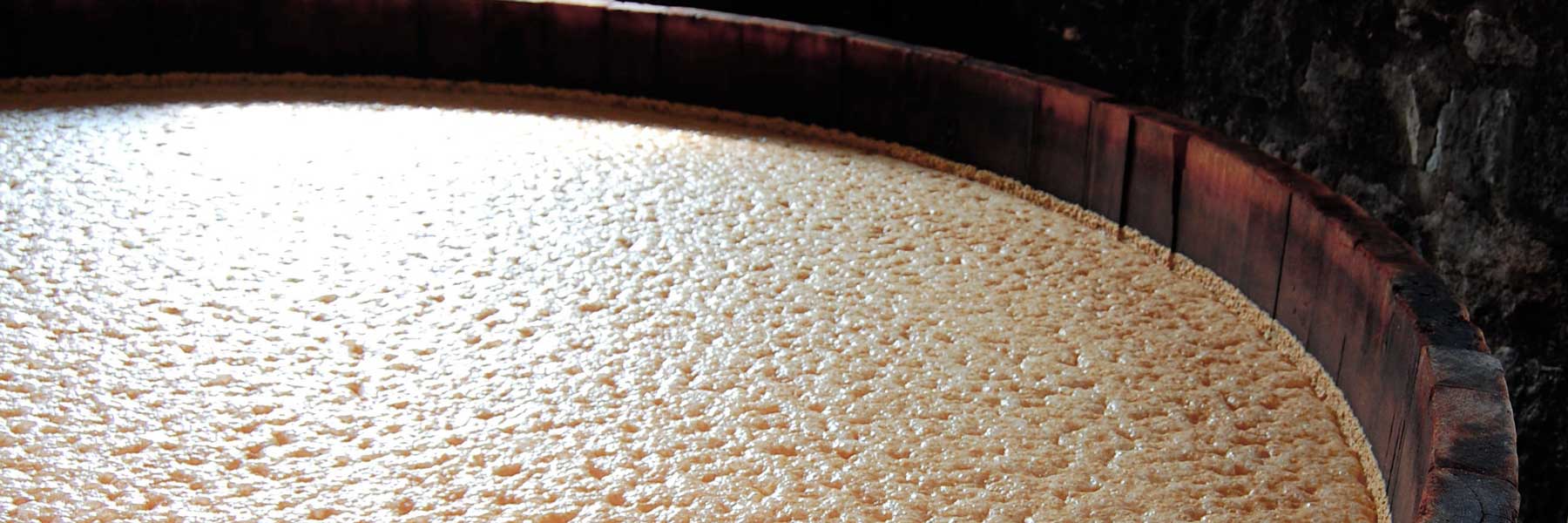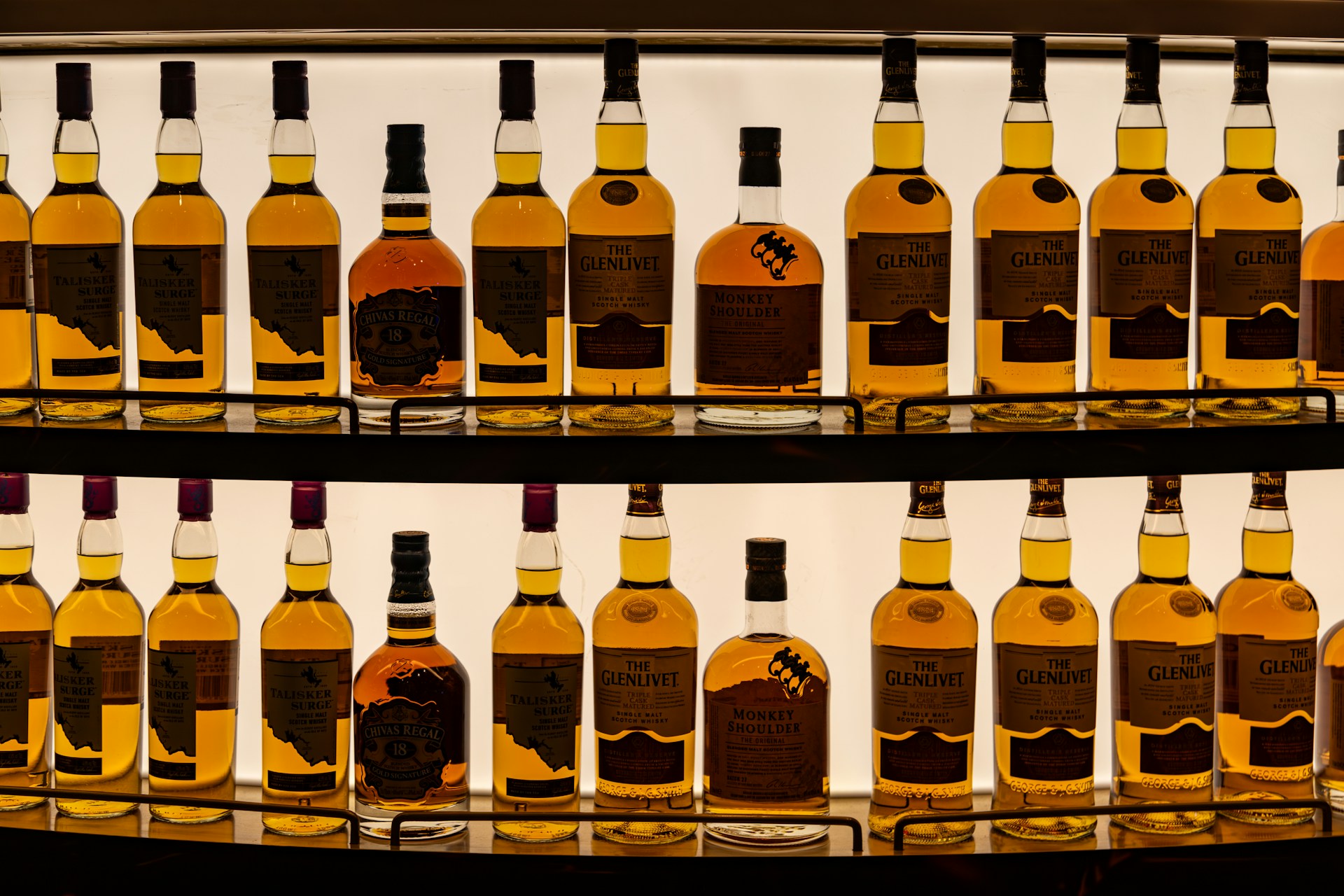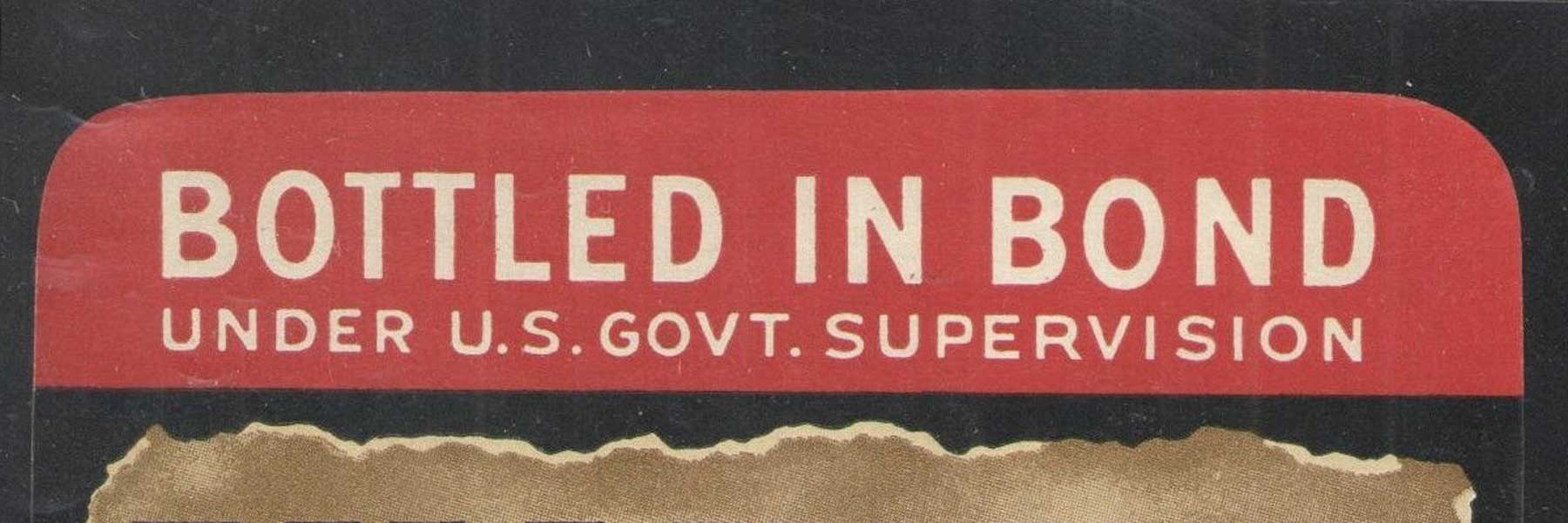What is the Mash Bill in Bourbon?
Last updated on November 12th, 2024
A mash bill refers to the ratio of cereal grains used to make American whiskey. The predominant grain in a bourbon mash bill is 51% corn, with the remaining ratio usually consisting of rye and wheat with a small percentage of malted barley. Distilleries each have their own mash bill recipes for their bourbons (and other whiskeys) which is integral to production-consistency and brand allure.

In other words, a mash bill is essentially the secret recipe that gives each bourbon its unique flavor profile. It’s the blend of grains (corn, rye or wheat, and malted barley) that sets the stage for bourbon-making.
As mentioned, the primary ingredient in a bourbon mash bill is corn, which must make up more than half the ingredients for the whiskey to be considered bourbon. Apart from this, every distillery has its own mash bill that makes its product unique.
For a better understanding of mash bills and their effect on bourbon, let’s take a closer look.
Understanding Bourbon Basics
Before delving into the specifics of mash bills, it’s crucial to grasp the fundamentals of bourbon. This uniquely American spirit has distinct characteristics and legal requirements that set it apart from other whiskeys.
What Makes Bourbon Unique?
Bourbon stands out in the world of whiskey due to its distinct characteristics and production methods. Unlike other whiskeys, bourbon must be made in the United States, though contrary to popular belief, it doesn’t have to come from Kentucky. What truly sets bourbon apart is its primary ingredient: corn. By law, bourbon’s mash bill must contain at least 51% corn, giving it a naturally sweeter profile compared to other whiskeys.
Another unique aspect of bourbon is its aging process. It must be aged in new, charred oak barrels, which impart distinctive flavors and colors to the spirit. This requirement ensures that every batch of bourbon benefits from fresh wood, contributing to its robust taste profile.
Legal Requirements for Bourbon
To earn the title of bourbon, a whiskey must meet several strict criteria set by U.S. law:
- Made in the United States
- Contain a minimum of 51% corn in its mash bill
- Distilled to no more than 160 proof (80% alcohol by volume)
- Entered into the barrel for aging at no more than 125 proof
- Aged in new, charred oak containers
- Bottled at 80 proof or higher
- Free from any added flavoring, coloring, or other additives
These requirements ensure consistency and quality across all bourbons, while still allowing for variation in taste and character.
The Mash Bill Explained
At the heart of every bourbon lies its mash bill, a crucial element that shapes its character and flavor. Let’s break down what a mash bill is and why it’s so important in the world of bourbon production.
Definition of a Mash Bill
A mash bill is the recipe of grains used to create a bourbon. It’s the specific combination of corn, rye, wheat, and malted barley that distillers use as the foundation for their spirit. This grain mixture is ground into a fine meal, mixed with water, and cooked to create a mash. The mash is then fermented, distilled, and aged to become bourbon.
Each distillery has its own signature mash bill, often kept as a closely guarded secret. These recipes are developed through years of experimentation and tradition, resulting in the unique flavors that distinguish one bourbon from another.
Importance of the Mash Bill in Bourbon Production
The mash bill is crucial because it significantly influences the final flavor profile of the bourbon. While other factors like aging, barrel char, and distillation methods play important roles, the mash bill sets the baseline for the bourbon’s taste.
Different grains contribute different flavors. Corn provides sweetness, rye adds spice and complexity, wheat brings a softer, smoother quality, and malted barley contributes enzymes necessary for fermentation as well as nutty flavors.
By adjusting the proportions of these grains, distillers can create a wide range of flavor profiles.
Main Components of a Bourbon Mash Bill
The mash bill is the foundation of bourbon’s flavor profile, consisting of a carefully balanced mix of grains. While there’s room for creativity, certain grains are essential in crafting this beloved American whiskey.
Corn
Corn is the star of the show in bourbon production, making up at least 51% of the mash bill as required by law. Many distillers use even higher percentages, often between 70% and 80%. Corn contributes significantly to bourbon’s signature sweetness and full-bodied character.
This grain imparts flavors reminiscent of caramel, vanilla, and butterscotch. It also helps create the smooth, creamy mouthfeel that bourbon is known for. The higher the corn content, the sweeter and more mellow the resulting bourbon tends to be.
Secondary Grains
After corn, distillers have a choice for their secondary grain: rye or wheat. This choice dramatically influences the bourbon’s flavor profile.
Rye is more commonly used and brings a spicy, peppery quality to the bourbon. It adds complexity and a bit of bite, contributing flavors like cinnamon, nutmeg, and black pepper. Bourbons with a higher rye content tend to have a bolder, more assertive character.
Wheat, on the other hand, creates a softer, smoother bourbon. It adds a gentle sweetness and contributes to a velvety texture. Wheat-based bourbons often have notes of honey, vanilla, and soft fruits. They’re generally considered more approachable for newcomers to bourbon.
Malted Barley
While it typically makes up the smallest portion of the mash bill, malted barley plays a crucial role in bourbon production. It contains enzymes that help convert starches from the other grains into fermentable sugars during the mashing process.
Beyond its functional purpose, malted barley contributes nutty, toasty flavors to the bourbon. It can add depth and complexity to the overall flavor profile, complementing the sweetness of the corn and the character of the secondary grain.
Common Bourbon Mash Bill Ratios
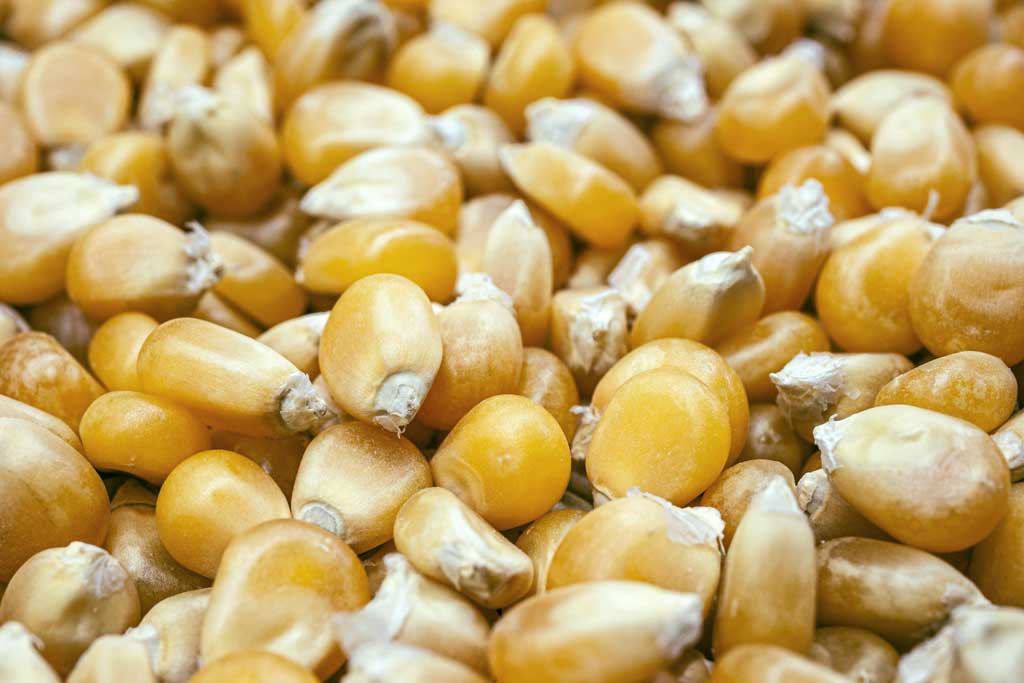
While each distillery has its own unique recipe, there are some common mash bill ratios that have become standard in the bourbon industry. These ratios help categorize bourbons and give consumers an idea of what to expect in terms of flavor profile.
Traditional Bourbon Mash Bills
The most common bourbon mash bill, often referred to as the “traditional” or “standard” recipe, typically consists of:
- 70-80% corn
- 10-15% rye
- 5-10% malted barley
This ratio creates a well-balanced bourbon with a sweet corn base, a touch of spice from the rye, and a hint of nuttiness from the barley. Many popular bourbon brands use variations of this mash bill.
High-Rye Bourbon Mash Bills
High-rye bourbons have gained popularity in recent years. These typically contain:
- 60-70% corn
- 20-35% rye
- 5-10% malted barley
The increased rye content results in a spicier, more complex bourbon with a robust character. These bourbons often have pronounced pepper and cinnamon notes alongside the traditional bourbon sweetness.
Wheated Bourbon Mash Bills
Wheated bourbons replace rye with wheat as the secondary grain. A typical wheated bourbon mash bill might look like:
- 70-80% corn
- 15-20% wheat
- 5-10% malted barley
Wheated bourbons are known for their smooth, mellow character. They often have a softer mouthfeel and flavors leaning towards caramel, vanilla, and bread-like notes.
How Mash Bills Affect Bourbon Flavor
The mash bill is a key factor in determining a bourbon’s flavor profile.
Corn’s Influence on Flavor
As the primary grain in bourbon, corn plays a dominant role in shaping its flavor:
- Sweetness: Corn is responsible for bourbon’s characteristic sweetness. It contributes flavors reminiscent of caramel, vanilla, and butterscotch.
- Body: Higher corn percentages often result in a fuller-bodied bourbon with a creamy mouthfeel.
- Softness: Corn tends to create a smoother, more approachable flavor profile.
Rye vs Wheat: Flavor Differences
The choice between rye and wheat as the secondary grain significantly impacts the bourbon’s character:
Rye:
- Adds spiciness and complexity
- Contributes flavors like black pepper, cinnamon, and nutmeg
- Creates a more robust, assertive bourbon
- Can add a slight dryness to the finish
Wheat:
- Provides a softer, smoother profile
- Enhances the natural sweetness of the corn
- Adds subtle flavors of honey and soft fruits
- Results in a more mellow, approachable bourbon
The percentage of these secondary grains can dramatically shift the bourbon’s flavor balance. A higher rye content will amplify spicy notes, while more wheat will emphasize smoothness and subtle sweetness.
Famous Bourbon Brands and Their Mash Bills
Exploring the mash bills of well-known bourbon brands can provide insight into how these recipes translate into distinct flavor profiles. Here are some famous bourbons and their mash bills:
- Jim Beam: 75% corn, 13% rye, 12% malted barley Known for its balanced, classic bourbon flavor.
- Maker’s Mark: 70% corn, 16% wheat, 14% malted barley A wheated bourbon with a smooth, sweet profile.
- Buffalo Trace: Undisclosed, but estimated 75% corn, 10% rye, 15% barley Offers a rich, complex flavor with a hint of spice.
- Four Roses S
- ingle Barrel: 60% corn, 35% rye, 5% malted barley A high-rye bourbon with a bold, spicy character.
- Woodford Reserve: 72% corn, 18% rye, 10% malted barley Delivers a well-rounded flavor with notable spice notes.
- Pappy Van Winkle: 70% corn, 16% wheat, 14% malted barley A highly sought-after wheated bourbon known for its smoothness.
These examples demonstrate how variations in mash bills contribute to each bourbon’s unique flavor profile and character.
FAQs
1. Can a bourbon’s mash bill change over time?
While it’s possible, most established distilleries maintain consistent mash bills for their core products to ensure flavor consistency.
2. Does a higher corn percentage always mean a sweeter bourbon?
Generally yes, but other factors like aging and barrel char also influence sweetness.
3. Are mash bills always disclosed by distilleries?
No, many distilleries keep their exact mash bills as trade secrets.
4. Can other grains besides corn, rye, wheat, and barley be used in bourbon?
Yes, as long as corn makes up at least 51% of the mash bill, other grains can be experimented with.
5. How does the mash bill affect aging time?
Higher rye content often requires longer aging to mellow out the spicy flavors, while wheated bourbons can be smoother at a younger age.
6. Is there a “best” mash bill for bourbon?
No, the best mash bill is subjective and depends on personal taste preferences.
Summary
- The mash bill is the recipe of grains used to create bourbon, significantly influencing its flavor profile.
- Corn must make up at least 51% of a bourbon’s mash bill, contributing sweetness and body to the spirit.
- Rye adds spice and complexity, while wheat creates a softer, smoother bourbon character.
- Common mash bill ratios include traditional (70-80% corn, 10-15% rye, 5-10% malted barley), high-rye, and wheated variations.
- Famous bourbon brands often have signature mash bills that define their unique flavors and characteristics.
- Understanding mash bills can enhance appreciation for bourbon and help enthusiasts find styles that suit their taste preferences.



